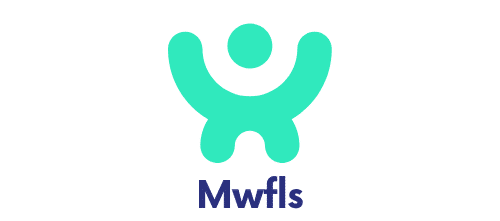Even in the early 21st century, the concept of digital twins was considered a futuristic idea. Today, it’s a reality. Digital twins have emerged as one of the most compelling technologies of the digital era, with applications extending across industries. From manufacturing and healthcare to energy and transportation, digital twins are revolutionizing the way we design, monitor, and maintain our physical world.
In the realm of urban planning and smart city development, digital twins are proving to be an indispensable tool. They are transforming the way we visualize, plan, and manage our cities.
Cela peut vous intéresser : Can Blockchain Technology Ensure Transparency and Traceability in the Food Supply Chain?
This article delves into the use of digital twins in urban planning and smart city development, offering insights into how this technological marvel is shaping our urban environments.
Understanding the Concept of Digital Twins
Before we explore the role of digital twins in urban planning and smart city development, let’s first understand what exactly a digital twin is.
A voir aussi : What Advances in Tissue Engineering Are Bringing Us Closer to Lab-Grown Organs?
A digital twin is a virtual replica of a physical entity. It is a digital model that mirrors a real-world object, process, system, or service. The digital twin captures data from its physical counterpart in real-time, allowing for dynamic analysis, simulations, and predictions. This technology enables us to understand, predict, and optimize performance to achieve improved outcomes.
The Role of Digital Twins in Urban Planning
The use of digital twins is rapidly gaining traction in the field of urban planning. It offers a promising way to tackle the complex challenges of urban development and sustainability.
A city is a complex system made up of various components such as buildings, roads, public spaces, and infrastructure. Each of these components interacts with one another in myriad ways, making urban planning a challenging task. Digital twins offer a holistic view of the city, capturing the intricate interactions between its various components.
Urban planners can use digital twins to visualize the city, analyze the impact of various design choices, and predict future scenarios. This enables them to make more informed decisions, leading to more effective urban planning.
For instance, a digital twin of a city could simulate the impact of a new building on traffic, air quality, and sunlight exposure in its vicinity. Planners could then use this information to assess whether the building should be approved, modified, or rejected.
Digital Twins in Smart City Development
Smart cities leverage technology to enhance the quality of life for their residents, improve environmental sustainability, and streamline city operations. Digital twins play a pivotal role in realizing this vision.
In a smart city, a digital twin serves as a dynamic, real-time model of the city’s operations. It integrates data from various sources, such as IoT devices, sensors, and city databases, providing a comprehensive view of the city’s functioning.
For example, a digital twin could integrate data from traffic sensors, weather reports, and event calendars to predict traffic congestion and suggest optimal routes for city buses. Similarly, it could use data from energy meters, solar radiation sensors, and weather forecasts to optimize energy consumption in city buildings.
The use of digital twins in smart city development allows for more effective city management and better delivery of city services. It empowers city managers to solve complex urban problems, make informed decisions, and improve the city’s resilience and sustainability.
Digital Twins and Citizen Engagement
Beyond technical applications, digital twins also have potential to transform citizen engagement in city planning and management.
With digital twins, citizens can visualize proposed changes to their city in a way that’s more tangible and accessible than traditional architectural plans. They can explore how new developments would affect their neighborhoods, providing valuable input into the planning process.
Digital twins can also facilitate more transparent and responsive city governance. Citizens can access the city’s digital twin to monitor city operations, track the progress of municipal projects, and report issues. This promotes accountability and fosters trust between citizens and city authorities.
The convergence of digital twins and citizen engagement offers a new way to design and manage our cities. It invites citizens to actively participate in shaping their urban environment, fostering a sense of community and ownership.
The Future of Digital Twins in Urban Planning and Smart City Development
As we move further into the digital age, the use of digital twins in urban planning and smart city development is set to increase.
With advancements in technologies such as AI, machine learning, and IoT, the capabilities of digital twins will continue to evolve. We can expect digital twins to become more sophisticated, accurate, and predictive, offering deeper insights into our urban environments.
While the journey is just beginning, the potential is enormous. Digital twins hold the promise of creating smarter, more sustainable, and more liveable cities. They represent the future of urban planning and smart city development, a future where technology and urban life come together in harmony.
Expanding the Use of Digital Twins in Urban Planning and Smart City Development
Understanding and exploring the potential of digital twins in urban planning and smart city development are only the beginning. Innovations in technology have led to a broader application of digital twins beyond just physical replication. It is an exciting time as we delve deeper into the potential of integrating digital twins into our everyday urban life.
Digital twins are now being used not just to replicate physical entities, but also to simulate intricate systems and processes. They are being utilized to model complex systems such as water supply networks, waste management systems, energy grids, and transportation networks. This allows us to understand these systems in a comprehensive and dynamic manner, enabling us to predict and respond to potential issues, and optimize system performance.
Moreover, the use of digital twins is extending to the realm of urban policy planning. Digital twins can simulate the economic, social, and environmental impacts of various policy measures, allowing policymakers to make more informed decisions. For example, a digital twin could simulate the impact of a new public transportation policy on traffic congestion, air quality, and commuting times.
The use of digital twins in urban planning and smart city development is truly a game-changer. It offers a powerful tool to help us navigate the complexities of urban development and sustainability, and to create cities that are smarter, more efficient, and more liveable.
Conclusion: The Revolutionary Impact of Digital Twins
In conclusion, digital twins are transforming the way we envision and plan our cities. They offer a powerful tool to help us navigate the complexities of urban development and sustainability. They allow us to visualize and analyze our urban environments in a comprehensive and dynamic manner, enabling us to make more informed decisions.
In the realm of smart city development, digital twins are a crucial component. They allow for more effective city management, improve the delivery of city services, and enhance the quality of life for city residents. They empower city managers to solve complex urban problems and make informed decisions. Moreover, they allow citizens to participate actively in the planning and management of their cities, fostering a sense of community and ownership.
Looking ahead, we can expect the use of digital twins in urban planning and smart city development to increase. With advancements in technologies such as AI, machine learning, and IoT, the capabilities of digital twins will continue to evolve. They hold the promise of creating smarter, more sustainable, and more liveable cities.
The potential of digital twins is enormous. They represent the future of urban planning and smart city development, a future where technology and urban life come together in harmony. As we move further into the digital age, the use of digital twins will only continue to expand and evolve. The possibilities are limitless, and the future is exciting.
















